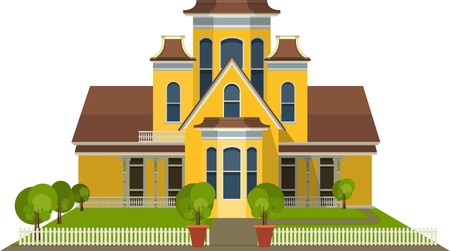1. Understanding House Flipping Basics
House flipping has become a popular way for people across the U.S. to invest in real estate and potentially earn big profits. But what exactly is house flipping, and how does it work?
What Is House Flipping?
House flipping is the process of buying a property, usually one that needs some repairs or updates, fixing it up, and then selling it for a profit. Most flips happen within a short time—typically less than a year. The goal is to buy low, renovate smartly, and sell high.
How House Flipping Works in the U.S.
The U.S. real estate market offers many opportunities for flipping homes, especially in neighborhoods with rising property values. Successful flippers often look for:
- Distressed properties (foreclosures, short sales, or fixer-uppers)
- Homes in up-and-coming areas
- Motivated sellers looking to close quickly
Once they purchase the home, they invest time and money into renovations that increase the property’s value—such as updating kitchens and bathrooms, improving curb appeal, or making structural repairs. After the work is complete, the house is listed on the market at a higher price.
Key Financial Principles Every Beginner Should Know
Before jumping into your first flip, its essential to understand the financial side of things. Here are some basic concepts every beginner should be familiar with:
The 70% Rule
This rule helps determine the maximum price you should pay for a property. It suggests that you should pay no more than 70% of a homes after-repair value (ARV), minus repair costs.
| After-Repair Value (ARV) | Estimated Repair Costs | Max Purchase Price (70% Rule) |
|---|---|---|
| $300,000 | $50,000 | $160,000 (= $300,000 × 0.7 – $50,000) |
Other Important Costs to Consider
Aside from repair costs, flippers need to factor in several other expenses:
| Cost Type | Description |
|---|---|
| Closing Costs | Fees paid when buying or selling the property (title fees, escrow fees, etc.) |
| Holding Costs | Monthly expenses while owning the property (mortgage payments, utilities, insurance) |
| Realtor Fees | Commission paid to real estate agents when selling the home (usually around 5–6%) |
| Taxes & Permits | Local government fees related to construction permits and property taxes |
Profit Margin Expectations
A good flip typically brings in a profit margin of around 10–20%. However, this can vary based on your local market conditions and how efficiently you manage renovation costs.
The Bottom Line
Flipping houses isnt just about swinging hammers and picking paint colors—its a business that requires solid planning and financial awareness. By understanding how house flipping works in the U.S., using smart investment rules like the 70% rule, and accounting for all potential expenses, beginners can set themselves up for success right from their first flip.
2. Finding the Right Property
One of the most important steps in house flipping is finding a property with strong profit potential. Not every house is a good candidate for a flip, so its essential to know where and how to look. Here are some key strategies you can use to find the right investment property.
Use the MLS (Multiple Listing Service)
The MLS is a database used by real estate agents to list properties for sale. It’s one of the most comprehensive resources available for finding homes on the market. As a beginner, you’ll need to work with a licensed real estate agent to access it. By setting up alerts and filters, you can quickly spot undervalued homes or those that have been sitting unsold for a while—potential signs of an opportunity.
Look Into Auctions
Property auctions can be a great way to score deals below market value. These often include homes that have been repossessed or are being sold by banks. However, auction properties typically require cash payment and may come with hidden issues since inspections are usually not allowed beforehand.
Types of Auctions
| Type | Description | Key Considerations |
|---|---|---|
| Foreclosure Auctions | Homes repossessed by lenders due to unpaid mortgages. | No inspections, sold as-is, may have liens. |
| Tax Lien Auctions | Properties sold due to unpaid property taxes. | Complex process, varies by state laws. |
| Online Real Estate Auctions | Auction websites offering nationwide listings. | Easier access, but competition can drive prices up. |
Search Foreclosures and Bank-Owned Properties
Banks often sell foreclosed properties at a discount because they want them off their books quickly. These are known as REO (Real Estate Owned) properties. You can find them through bank websites, government foreclosure listings like HUD Homes or Fannie Mae’s HomePath, and through your real estate agent.
Work With Real Estate Agents Who Specialize in Investment Properties
An experienced real estate agent can be your best resource when youre just starting out. Look for agents who specialize in working with investors—theyll understand what makes a good flip and may even have early access to off-market deals. They can also help guide you through pricing, offer strategies, and negotiations.
Questions to Ask a Potential Agent
- Do you have experience working with house flippers?
- Can you help identify undervalued or distressed properties?
- Do you have connections with contractors or inspectors?
- Are you familiar with local zoning laws and permit requirements?
Create Your Own Leads Through Driving for Dollars
This old-school method involves driving around neighborhoods looking for distressed properties—homes with overgrown lawns, broken windows, or piled-up mail are signs of potential flips. Once identified, you can reach out directly to owners using public records or mailing services.
Pros and Cons of Each Strategy
| Strategy | Pros | Cons |
|---|---|---|
| MLS Listings | Wide selection, updated frequently | High competition from other buyers |
| Auctions | Potentially lower prices | No inspections, requires cash purchase |
| Foreclosures/REOs | Selling below market value, motivated sellers | May need significant repairs, limited disclosures |
| Real Estate Agents | Professional guidance and network access | You’ll pay commission fees |
| Driving for Dollars | Find hidden gems not yet listed publicly | Time-consuming, hit-or-miss success rate |
The key is to combine multiple strategies to increase your chances of finding the perfect property for your first flip. Being proactive and building strong relationships in the industry will make it easier over time.

3. Financing Your Flip
Before you can start flipping houses, you need to figure out how youre going to pay for everything—from buying the property to covering renovation costs. In the U.S., there are several common financing options for house flippers. Choosing the right one depends on your budget, timeline, experience level, and risk tolerance.
Hard Money Loans
Hard money loans are short-term loans provided by private lenders rather than traditional banks. Theyre popular among house flippers because they offer fast approval and funding—often within days. However, they come with higher interest rates and shorter repayment periods.
Pros:
- Quick approval process
- Less strict credit requirements
- Ideal for short-term projects
Cons:
- High interest rates (typically 8%–15%)
- Short loan terms (usually 6–12 months)
- Lenders may require a larger down payment
Private Lenders
A private lender can be a friend, family member, or investor willing to fund your flip in exchange for a return. This option is more flexible than working with institutions, but it requires trust and clear agreements.
Pros:
- Flexible terms and repayment options
- No red tape or long approval processes
- Potentially lower interest rates if negotiated well
Cons:
- You must build trust with the lender
- Lack of formal structure can lead to misunderstandings
- Your personal relationships may be at risk if things go wrong
Traditional Mortgages
This route includes conventional home loans provided by banks or credit unions. While not usually ideal for quick flips due to longer approval times and stricter requirements, they can work if youre flipping a primary residence or planning a longer project.
Pros:
- Lower interest rates (compared to hard money loans)
- Easier to manage over a longer term
- Might qualify for special programs (like FHA 203(k))
Cons:
- Difficult to qualify with poor credit or high debt-to-income ratio
- SLOW closing process—can take weeks or months
- Lender restrictions on fixer-upper properties
Financing Options Comparison Table
| Financing Option | Interest Rates | Approval Time | Best For | Downsides |
|---|---|---|---|---|
| Hard Money Loan | 8%–15% | A few days to a week | Quick flips with tight timelines | High cost, short terms |
| Private Lender | Varies (negotiable) | Flexible—depends on relationship | Flippers with investor connections or trusted partners | Less formal structure; relationship risks |
| Traditional Mortgage | 5%–7% (varies) | Several weeks or more | Longer flips or owner-occupied rehabs | Slow process; strict qualifications |
How to Choose the Right Financing Option for You
The best financing method depends on your unique situation. If youre new to flipping and don’t have investor contacts, a traditional mortgage might be your starting point—just keep in mind the slower timeline. If youre ready to move quickly and have some experience or capital, a hard money loan could help you close deals fast. Private lending is great if you have access to a strong network and want flexibility in your terms.
No matter which route you choose, make sure you calculate all costs—including loan fees, interest payments, and holding costs—to ensure the deal still makes financial sense.
4. Renovating for Maximum ROI
Renovation is where the magic happens in house flipping. Done right, it can significantly increase your resale value and profits. But its also where many beginners make costly mistakes. In this section, well walk you through renovation best practices, how to budget smartly, work effectively with contractors, and choose updates that appeal to American homebuyers.
Best Practices for Renovations
- Start with a Plan: Create a clear renovation plan before swinging a hammer. Know what needs fixing and what can stay as-is.
- Focus on Functionality: Ensure all systems (electrical, plumbing, HVAC) are safe and up to code.
- Keep It Neutral: Use neutral colors and classic finishes that appeal to the widest range of buyers.
- Stay Within Market Standards: Don’t over-upgrade. Match your improvements to neighborhood expectations.
Budgeting for Repairs
Creating a realistic renovation budget is key to flipping success. Always include a buffer for unexpected costs—typically 10%–20% extra.
Sample Renovation Budget Breakdown
| Category | Estimated % of Total Budget |
|---|---|
| Kitchens & Bathrooms | 35% |
| Interior Updates (paint, flooring) | 20% |
| Exterior Improvements (landscaping, curb appeal) | 15% |
| Systems (plumbing, electrical, HVAC) | 20% |
| Contingency Fund | 10% |
Working with Contractors
Your contractor can make or break your flip. Here’s how to build a strong working relationship:
- Get Multiple Quotes: Compare at least three bids to ensure fair pricing.
- Check References & Licensing: Only hire licensed professionals with good reviews and verifiable experience.
- Create Written Contracts: Outline scope of work, payment terms, deadlines, and penalties for delays.
- Stay Involved: Visit the site regularly to monitor progress and address issues early.
Choosing Value-Adding Updates
Certain upgrades consistently offer high returns in the U.S. real estate market. Focus on these areas to maximize your ROI:
Top Renovations That Add Value
| Improvement | Description | Why It Matters |
|---|---|---|
| Kitchen Remodel | Modern appliances, new cabinets, updated countertops | Kitchens sell homes; buyers want move-in ready spaces |
| Bathroom Upgrades | New vanities, fixtures, lighting, and tile work | Adds comfort and luxury appeal |
| Curb Appeal Enhancements | Siding repair, fresh paint, landscaping | Makes a strong first impression from the street |
| LVP or Hardwood Flooring | Durable and modern flooring options throughout home | A top feature buyers expect in todays market |
| Energy-Efficient Features | LED lighting, smart thermostats, efficient windows | Saves future homeowners money and adds modern appeal |
A well-planned renovation not only increases property value but also shortens time on market. Focus on improvements that matter most to local buyers and keep your budget tight to maximize profit potential.
5. Selling Your Flipped Property
Once your renovation work is complete, it’s time to sell your flipped property. This step is where you turn all your hard work into profit. To do this successfully, you need a solid sales strategy that includes smart pricing, effective staging, and working with the right real estate professionals.
Pricing Strategies That Work
Setting the right price from the start is key to attracting serious buyers and selling quickly. Overpricing can scare off potential buyers, while underpricing may leave money on the table. Here are some common pricing strategies:
| Strategy | Description |
|---|---|
| Comparative Market Analysis (CMA) | Use recent sale prices of similar homes in your area to determine a competitive price. |
| Psychological Pricing | Price just below a round number (e.g., $299,900 instead of $300,000) to make the price feel more attractive. |
| Price Banding | Avoid pricing your home at numbers where there’s heavy competition; instead, choose a unique price point within a range to stand out. |
| Tiered Pricing Strategy | If you’re not in a rush, start slightly higher and drop incrementally if necessary based on buyer interest. |
Staging Tips to Attract Buyers
Home staging helps buyers imagine themselves living in the space. A well-staged home can sell faster and for more money. Here are some simple yet effective staging tips:
- Declutter: Remove personal items and unnecessary furniture to make rooms look more spacious.
- Neutral Colors: Use neutral tones for walls and decor to appeal to a broader audience.
- Curb Appeal: First impressions matter—keep the lawn trimmed, add fresh mulch, and consider painting the front door.
- Light It Up: Make sure every room is well-lit by using natural light during showings or adding lamps as needed.
- Add Finishing Touches: Use throw pillows, artwork, and plants to give the home warmth without overwhelming it.
Working with Realtors
A good real estate agent can be a game-changer when selling your flipped house. They bring market knowledge, negotiation skills, and marketing resources that help you close deals faster. Heres how to make the most out of working with a realtor:
Choose an Agent with Local Experience
Select someone who knows your neighborhood and has experience selling renovated homes. Ask for references and examples of past flips they’ve sold.
Set Clear Expectations
Discuss listing price, commission rate, marketing plan, and communication preferences upfront so everyone is on the same page.
Leverage Their Network
A seasoned agent often has connections with buyers’ agents, inspectors, stagers, and title companies that can speed up the sales process.
Marketing Your Flip Effectively
Your agent will likely handle most of the marketing but be sure they’re using these key tools:
- High-Quality Photos: Professional photos make your listing stand out online.
- Online Listings: Make sure your property is listed on Zillow, Realtor.com, Redfin, and local MLS systems.
- Open Houses: These events give buyers a chance to tour the home in person—stage accordingly!
- Social Media Marketing: Promote your listing on platforms like Facebook Marketplace and Instagram for added exposure.
The Bottom Line: Time Is Money
The longer your flip sits unsold, the more holding costs (like mortgage payments, insurance, utilities) you’ll have to pay. Aim for a fast sale by pricing smartly, staging thoughtfully, and partnering with an experienced realtor who understands your goals as an investor.


